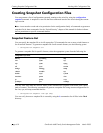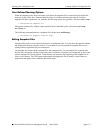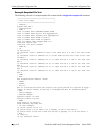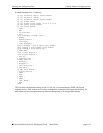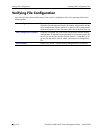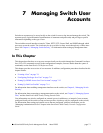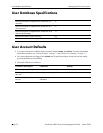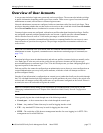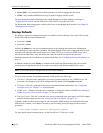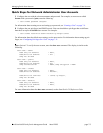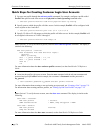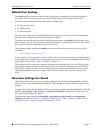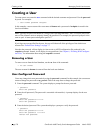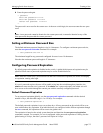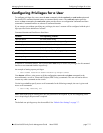
Overview of User Accounts Managing Switch User Accounts
page 7-4 OmniSwitch 6600 Family Switch Management Guide March 2005
• Secure Shell—Any standard Secure Shell client may be used for logging into the switch.
• SNMP—Any standard SNMP browser may be used for logging into the switch.
For more information about connecting to the switch through one of these methods, see Chapter 1,
“Logging Into the Switch,”and the OmniSwitch 6600 Family Getting Started Guide.
For information about setting up the switch to allow user access through these interfaces, see Chapter 8,
“Managing Switch Security.”
Startup Defaults
By default, a single user management account is available at the first bootup of the switch. This account
has the following user name and password:
• user name—admin
• password—switch
Initially, the admin user can only be authorized on the switch through the console port. Management
access through any other interface is disabled. The Authenticated Switch Access commands may be used
to enable access through other interfaces/services (Telnet, HTTP, etc.); however, SNMP access is not
allowed for the admin user. Also, the admin user cannot be modified, except for the password.
Password expiration for the admin user is disabled by default. See “Configuring Password Expiration” on
page 7-9.
In addition, another account, default, is available on the switch for default settings only; this account
cannot be used to log into the switch. It is used to store and modify default settings for new users.
Note. Up to 64 users may be configured in the local switch database.
To set up a user account, use the user command, which specifies the following:
• Password—The password is required for new users or when modifying a user’s SNMP access. The
password will not appear in an ASCII configuration file created via the snapshot command.
• Privileges—The user’s read and write access to command domains and families. See “Configuring
Privileges for a User” on page 7-11 for more details.
• SNMP access—Whether or not the user is permitted to manage the switch via SNMP. See “Setting Up
SNMP Access for a User Account” on page 7-12 for more details.
• End-User Profile—The user’s read and write access to command areas, port ranges, and VLAN ranges;
used for customer login accounts. See “Setting Up End-User Profiles” on page 7-14.
Typically, options for the user (privileges or end-user profile; SNMP access) are configured at the same
time the user is created. An example of creating a user and setting access privileges for the account is
given here:
-> user thomas techpubs read-write domain-policy md5+des
For more details about command syntax, see the OmniSwitch CLI Reference Guide.



